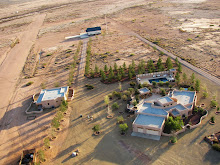Probably the most important thing I have learned about aerial videography is the importance of relative motion. That is understanding how objects move relative to one another in a scene while flying, then capturing that on video. Just as aerial still photography requires an emphasis on composition, aerial videography requires thinking about composition through time and how all the objects in the frame will look moving relative to one another.
The first step in understanding relative motion is camera placement. The advantage of taking video from WSC aircraft, or any ultralight trike for that matter, is realizing that there are lots of places to mount a camera and the effect you want will dictate the mounting position. If the camera is a passive observer in the scene then stability is required and mounting on the control bar or an element of the wing provides the most stability. If the camera is an active participant in the scene then mounting on carriage or front tube adds some movement during video recording which helps make the viewer part of the action. There are 2 videos where different camera placement was the goal of the exercise.
Learning to Aerotrekk had 10 camera placements and focused on demonstrating a low pass from the pilots perspective.
Personal Protection based on the 1950's Duck and Cover also had 10 camera placements and compares control bar and wing mounting versus carriage mounted views.
Subscribe to:
Post Comments (Atom)








No comments:
Post a Comment